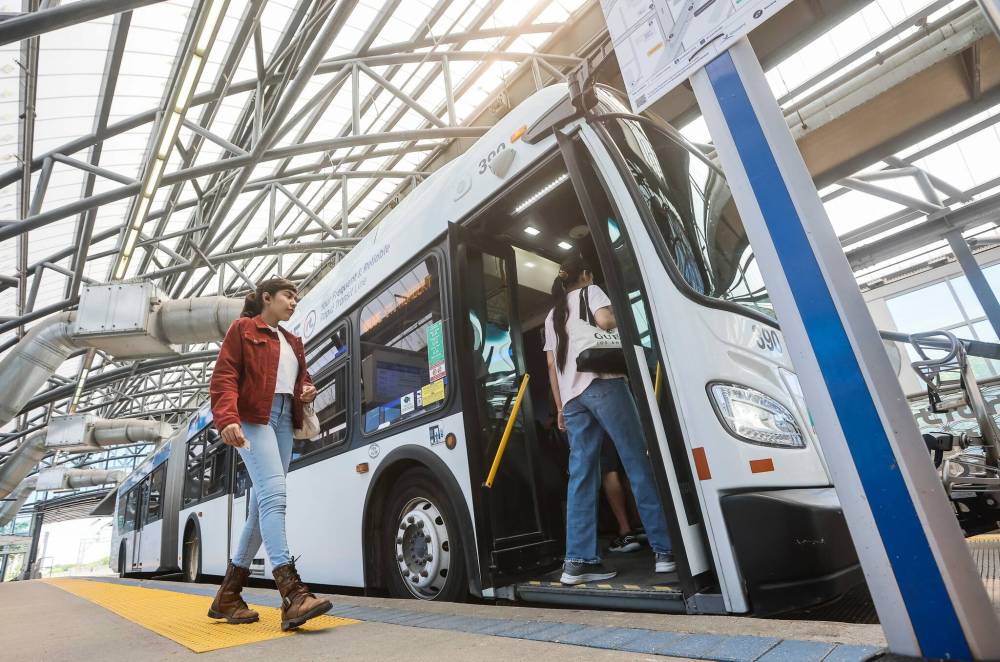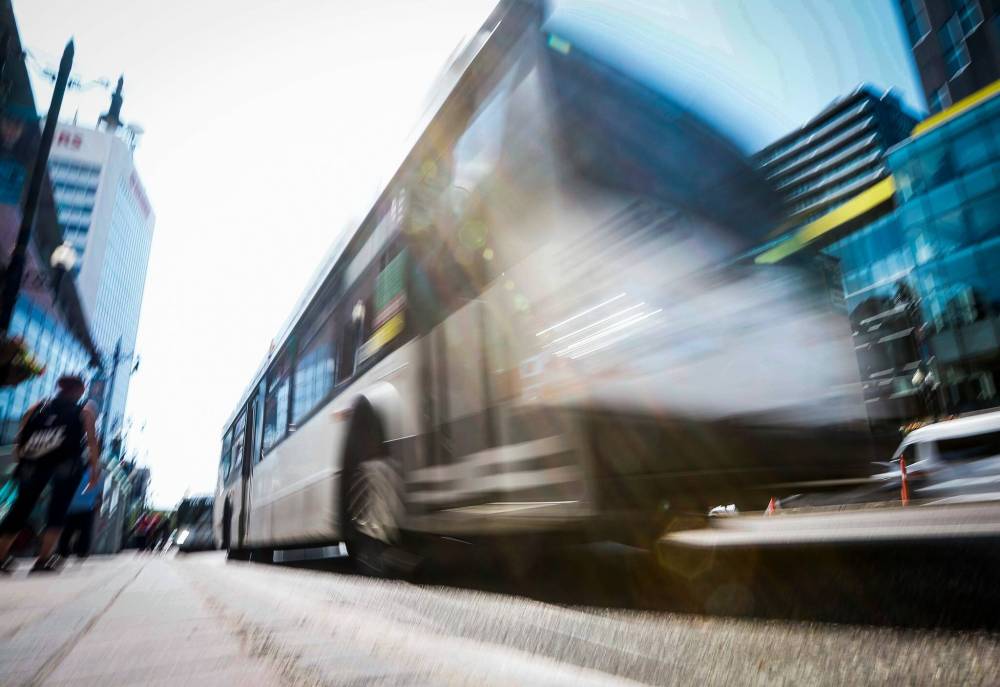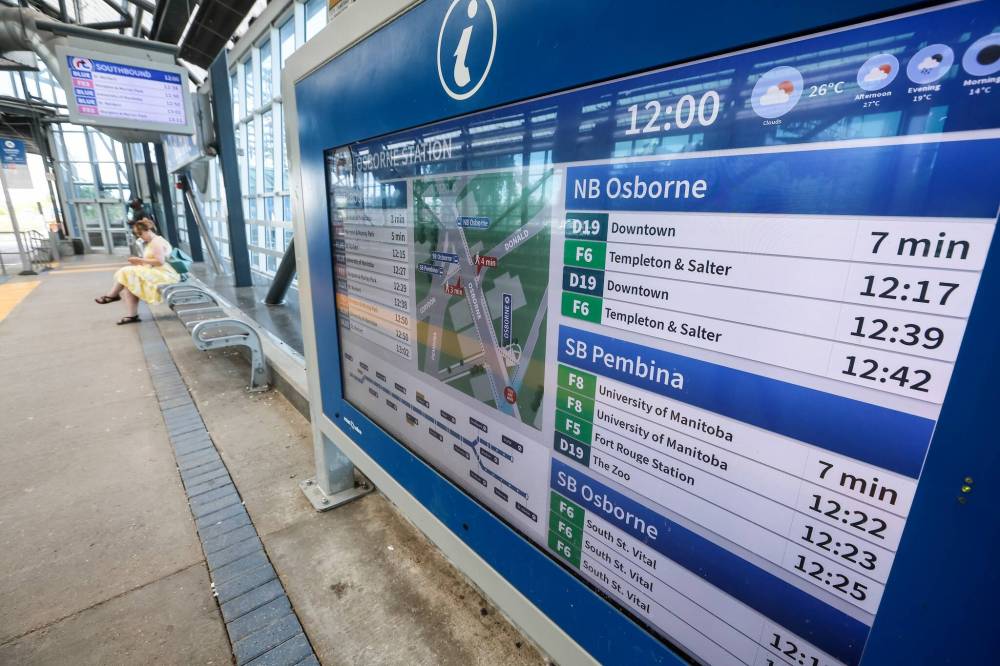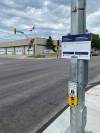New transit system working through ‘glitches’
Bus stop adjustments likely: councillor
Advertisement
Read this article for free:
or
Already have an account? Log in here »
To continue reading, please subscribe:
Monthly Digital Subscription
$0 for the first 4 weeks*
- Enjoy unlimited reading on winnipegfreepress.com
- Read the E-Edition, our digital replica newspaper
- Access News Break, our award-winning app
- Play interactive puzzles
*No charge for 4 weeks then price increases to the regular rate of $19.00 plus GST every four weeks. Offer available to new and qualified returning subscribers only. Cancel any time.
Monthly Digital Subscription
$4.75/week*
- Enjoy unlimited reading on winnipegfreepress.com
- Read the E-Edition, our digital replica newspaper
- Access News Break, our award-winning app
- Play interactive puzzles
*Billed as $19 plus GST every four weeks. Cancel any time.
To continue reading, please subscribe:
Add Free Press access to your Brandon Sun subscription for only an additional
$1 for the first 4 weeks*
*Your next subscription payment will increase by $1.00 and you will be charged $16.99 plus GST for four weeks. After four weeks, your payment will increase to $23.99 plus GST every four weeks.
Read unlimited articles for free today:
or
Already have an account? Log in here »
Longer travel times, inconvenient stops and added transfers rank among the top complaints shared by Winnipeg Transit riders who aren’t happy with the recent overhaul of the entire network.
Coun. Janice Lukes said it’s not surprising these concerns are the most common, as riders adjust to a new primary transit network that rolled out June 29.
She urged passengers to report all issues directly to 311, which will ensure Winnipeg Transit receives them.

“Is (the system) perfect? No. There will be some glitches we have to work through … We will be making adjustments, probably on bus stops,” said Lukes, the chairwoman of council’s public works committee.
The Waverley West councillor expects the new spine-and-feeder system, which uses community feeder routes to connect to more central ones, should make many buses more reliable.
“Instead of a bus starting in one end of the city and weaving its way through the entire city … these feeder routes connecting to main lines allow for better predictability in the timing of (bus arrivals.) You’re going to have better connectivity and better connections, but you have to transfer and that is something that’s not changing,” said Lukes.
Winnipeg Transit said the new network will improve bus service for around 60 per cent of passengers, stay the same for around 30 per cent of riders and get worse for around 10 per cent.
“When you think of the millions of trips that we do… there are some challenges in certain areas but, in other areas, it’s going great,” said Lukes.
The system is designed to ensure buses arrive every 15 minutes or less during peak hours on the most frequent routes, which Lukes said should help improve service and increase ridership overall.
She urged riders to be patient while trying out the system in its early days, noting construction delays could be adding to commute times right now.
Meanwhile, Winnipeggers have shared concerns about the new system.
Jasmeet Kaur said her new commute between downtown and Erin Street is frustrating, inconvenient and complicated, to the extent she is considering alternative transportation this winter.
“We asked for better service, more buses and improved timing. What we got instead was fewer routes, reduced accessibility and longer travel times. What used to take me 20 minutes now takes anywhere from 50 minutes to an hour and 20 minutes. That’s not a small change — it’s a complete disruption of daily life,” Kaur recently wrote to the Free Press.
In an interview, she said her previous direct route was replaced by one with a transfer. The first bus is often early or late, which has led her to miss the second bus once, said Kaur.

Since buses arrive on her second route roughly every 50 minutes, she opted to call an Uber to finish the trip.
“It is so frustrating… it’s very unreliable to take the next bus,” said Kaur.
John Simba, a Point Douglas resident, said the new network replaced two routes he relied on to reach downtown.
The replacement route now requires a transfer at an inconvenient “side street” stop, instead of travelling directly to a community hub such as the Polo Park mall, where one of his past routes made a stop.
“My first concern is where we catch the bus (to transfer). I now have to catch the bus at Burrows (Avenue) and McPhillips (Street), which is sometimes not (as safe)… especially when fall/winter hours come and it’s dark outside,” said Simba.
It now takes an average of 15 minutes longer to reach his workplace. If he misses the feeder route bus closest to his home, the next one won’t arrive for 45 minutes, he said.
River Heights resident Taylor Reisdorf said he decided against trying out the new bus system, after determining online that his new route would likely take 40 minutes or more to reach downtown instead of the previous 15 to 20.
“It was no longer practical for me to take the bus. Since the change… I have been riding my bike,” said Reisdorf.
“If the buses don’t go where people need, it doesn’t matter if they come twice as often,” he added.
Reisdorf said he ruled out a few potentially quicker ride times that allowed just one minute between transfers, which he feared wouldn’t prove possible.

Winnipeg Transit did not grant an interview request.
In an email, a Transit spokeswoman noted “not every transit user will have an improvement in overall trip time,” while stating transfers can support a more frequent, reliable service.
The spokeswoman said Transit is closely tracking feedback on the network, including complaints about longer trip times.
“This feedback will be used to make tweaks to our network and schedule in the short term. It will also inform potential larger changes (service expansions) we may recommend in the years to come,” wrote Megan Benedictson.
Benedictson said the bus stop at Burrows Avenue and McPhillips Street was chosen because it is a key junction between a regional road with frequent bus service and a collector street with community bus routes.
joyanne.pursaga@freepress.mb.ca
X: @joyanne_pursaga

Joyanne is city hall reporter for the Winnipeg Free Press. A reporter since 2004, she began covering politics exclusively in 2012, writing on city hall and the Manitoba Legislature for the Winnipeg Sun before joining the Free Press in early 2020. Read more about Joyanne.
Every piece of reporting Joyanne produces is reviewed by an editing team before it is posted online or published in print — part of the Free Press‘s tradition, since 1872, of producing reliable independent journalism. Read more about Free Press’s history and mandate, and learn how our newsroom operates.
Our newsroom depends on a growing audience of readers to power our journalism. If you are not a paid reader, please consider becoming a subscriber.
Our newsroom depends on its audience of readers to power our journalism. Thank you for your support.

















